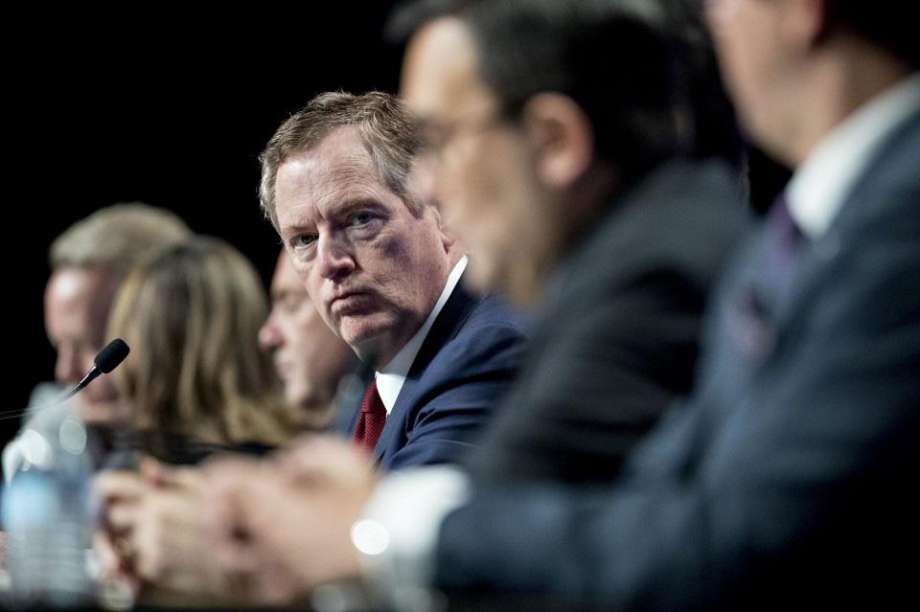Trump wants to bully Congress into accepting a new NAFTA
Vox | 20 April 2018
Trump wants to bully Congress into accepting a new NAFTA
By Zeeshan Aleem
US Trade Representative Robert Lighthizer is considering an audacious plan to bully Congress into approving a new version of NAFTA — but some experts think the plan could backfire.
Lighthizer is currently overseeing US negotiations with Canada and Mexico to revise the 1994 free-trade agreement that eliminated trade barriers between their economies. After the three countries come to an agreement in principle — which they’re hoping to do by May 4 — the legislative branch of each country has to approve the agreement.
The Trump administration is concerned that Republican lawmakers might not want to ratify the new version of NAFTA that it settles on with Canada and Mexico because it could involve scrapping provisions that lots of pro-business Republicans desperately want to keep in the agreement.
GOP lawmakers are particularly concerned that Trump could end up nixing things like the “investor-state dispute settlement” (ISDS) mechanism — a provision that allows corporations to sue foreign governments in tribunals if they think they’ve been wronged by them — or adding a sunset clause that would require the countries to vote every five years on whether to stay in NAFTA. US businesses tend to think that the ISDS mechanism is vital to their ability to protect their foreign investments and that a sunset clause would cause immense uncertainty in the North American business environment.
So Lighthizer is reportedly considering an aggressive plan that would force lawmakers to accept it anyway: withdrawing from NAFTA before the new version is ready. It’s a risky move, and one that experts say might turn out to be fruitless.
Lighthizer’s strong-arm tactic could be very hard to pull off
The logic behind the move is that even lawmakers who are opposed to Trump’s NAFTA will ratify it because they prefer a bad NAFTA to no NAFTA at all. Currently, lawmakers can reject Trump’s version of NAFTA and rest assured that the status quo will remain. Without NAFTA, their hand could be forced.
But trade experts are skeptical that this is a wise course of action for the Trump administration. They point out that the move could cause huge rifts between Trump and his party, given how fiercely the pro-Republican business lobby opposes some of the Trump administration’s objectives for the new NAFTA.
“The administration floated the idea of using the same tactic to gain leverage in the negotiations with Canada and Mexico — but ultimately decided it was better to work with those countries rather than threaten them,” Christopher Wilson, an expert on NAFTA at the Wilson Institute, told me.
“It would be strange and rather dangerous to employ hardball tactics deemed inappropriate for our trading partners on the Republican-led Congress,” Wilson added.
Monica de Bolle, a senior fellow at the Peterson Institute for International Economics, told me that the Trump administration’s plan suffers from an even bigger problem: Although the Trump administration can trigger withdrawal by invoking Article 2205 of NAFTA, it needs Congress to vote to actually pull out of the deal for good.
In other words, Lighthizer would have to convince Congress to do something that would give them less leverage in the debate over what the new NAFTA should look like.
Lighthizer is considering strong-arm tactics in part because there are huge time constraints on settling on a new deal. Mexico is slated for national elections in July, and the US holds midterm elections in November.
Both contests could shake up the governments of the two countries — if Democrats end up controlling the House of Representatives, for instance, or if new Mexican lawmakers oppose concessions to the US — and make ratifying a new deal a lot more complicated.
But trying to force Congress’s hand instead of trying to work with it might end up being a dead end.






